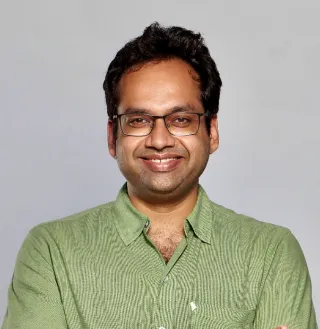-
CENTRES
Progammes & Centres
Location
India has world class healthcare in urban agglomerations, but public healthcare continues to be overcrowded and underfunded

You’re in India. You fall ill. What do you do?
They will treat you for free, but there is a chance that the doctors themselves are missing, and you might have to wait for the whole day in a queue awaiting your turn, missing your day’s earnings. In both these hospitals, your concerns will be addressed by the doctor in less than 2-2 and a half minutes, and your medical history is unlikely to be taken.
As you sit with a prescription, you can go to a private pharmacy or Jan Aushadhi Kendra. Depending upon which state you are in, you might get them for free in public hospitals. Your prescription may be of different types too: It may use the generic name or the brand name of the medicine (despite the latter being disallowed). If it’s a brand, then your pharmacist will give you the exact same medicine as prescribed. If it is the molecule name, your pharmacist can choose the medicine for you. Unless you are aware of and believe in the effectiveness of ‘unbranded generics’, it is a 10-200% cheaper alternative (depending on your ailment)<2>. However, you will have to ask for it, maybe even twice.
Depending upon your disease, these costs can be between manageable to monumental, and if not admitted to the hospital, all borne by you. As is infamously quoted, India’s Out-Of-Pocket-Expenditure (OOPE) for health is one of the highest in the world at 63 percent in 2018.
If you go to a Jan Aushadhi Kendra, you will get the cheapest medicines, but only if they are available at the time. There is a high chance that they will not be. Another caveat here is that neither you nor your doctor might know that there are Jan Aushadhi Kendras near you.
Depending upon your disease, these costs can be between manageable to monumental, and if not admitted to the hospital, all borne by you. As is infamously quoted, India’s Out-Of-Pocket-Expenditure (OOPE) for health is one of the highest in the world at 63 percent in 2018. Indians pay more money out of their pockets than some of the poorest countries in the world for availing healthcare. The question, then, is, why a country lauded as the ‘Pharmacist of the World’ makes healthcare so unaffordable for its residents?
Out of what Indians spend for healthcare, medicines constitute the highest share (72 percent in rural, 70 percent in urban), followed by hospitalisation (getting admitted, tests, consultation) and non-hospitalisation (transit, food, etc.) expenses.
India is the hub for some of the cheapest medicines and vaccines in the world. Post-Independence, the Indian pharmaceutical market was dominated by patented western medicines, unaffordable to the larger public. The Patents Act of 1970 abolished product and process patenting, which effectively meant that India now had the chance to reverse engineer and domestically manufacture medicines. Manufacturing firms grew in thousands and by the end of the 1980s, India was exporting affordable and effective medicines and vaccines to the whole world. But here is the contradiction: Medicines were getting cheap and more widely available, but unaffordability remained a concern as medicines continued to constitute a large part of OOPE. To understand why, it is essential to understand the type of medicines in India.
Branded generics are the most heavily consumed (figures quote between 70-80 percent or even 90 percent of the share). Branded generics are unpatented medicines, which a particular brand manufacturer sells under their brand name.
Medicines used by Indians are predominantly : branded generics, authorised generics, unbranded generics, and branded patented medicines. Branded generics are the most heavily consumed (figures quote between 70-80 percent or even 90 percent of the share). Branded generics are unpatented medicines, which a particular brand manufacturer sells under their brand name. Unbranded ones, on the other hand, are not tagged by any brand. Both nearly provide the same efficacy, but manufacturers use the tag of a brand to instil assurance of greater quality. However, whistle-blowers of branded generic firms have brought to light the unscrupulous practices that underlie the safety claim of branded generics. While recent cases about spurious and substandard unbranded generic drugs are concerning, they can be tackled with stringent rules for quality control.
It is this brand differentiation that makes branded generics cost significantly higher than unbranded ones. Pharmaceutical companies employ a wide range of brand differentiation and visibility tactics in the face of cutthroat competition in India. They reach doctors via marketing representatives, promising incentives and gifts such as free vacations and conferences in exchange for prescriptions of their brands. These unscrupulous practices have been prevalent since the growth of the industry, and the State took notice and outlawed them only recently.
Coupled with a patient’s attitude of ‘no-compromise’ on healthcare, a doctors’ recommendation of a particular brand effectively negates the possibility of a patient choosing an unbranded medicine. Hence, the intense competition in pharmaceuticals in India has not resulted in radical lowering of prices.
Let us now turn to the second piece of the puzzle: Doctors and large healthcare providers. The nature of tertiary care in India changed drastically in the last three decades. Often critiqued as ‘corporatisation’ of healthcare, large tertiary healthcare providers in India earlier belonged to charitable trusts or foundations, which prioritised care over profits. After the 1980s, those setting up large private hospitals were given free land by the State (with nominal rent), and massive tax concessions and benefits in exchange of a promise of delivering free healthcare for the poor. This marked the spurt in private, corporate, for-profit healthcare providers. These hospitals employ the latest state-of-the-art technologies to mark a superior quality of healthcare. These costs are borne by the patients. Indeed, this is in no way to underplay the importance of scientific development in medicine, but a crucial critique of higher prices in corporate hospitals. Private practitioners, on the other hand, are under the ambit of very few rules regarding fees charged. The Clinical Establishment (Registration and Regulation) Act, 2010 sought to make treatment seeking much more transparent for patients, but many doctor associations across the country have tried to resist the enactment of the law.
Hospitals in the public sector pose a larger gamut of issues for patients. Most patients do not prefer them because of lack of hygiene and disrespectful treatment. There are shocking instances of doctor absenteeism in public healthcare, probably because of low financial incentives. There is a lack of reliable infrastructure and technologies, with only one bed available for every 2000 individuals.
Hospitals in the public sector pose a larger gamut of issues for patients. Most patients do not prefer them because of lack of hygiene and disrespectful treatment.
The third most important piece of the puzzle is the State . Investments in public hospitals and primary healthcare centres are not enough, given the sheer size and healthcare needs of the population. The State has historically regulated the prices of medicines via the Drug Price Control Orders, which cap the price rise of molecules, particularly for widespread and life-threatening diseases. However, medicines continue to constitute a large part of the OOPE because they are not financed by the State. To finance medicines and avert margins of supply chain stakeholders, some states like Tamil Nadu and Rajasthan procure cheap unbranded generics from manufacturers and via centralised agencies sell it directly to the patients. Extending this to private providers also would radically change OOPE for medicines.
Rolling out of insurance schemes, which the Indian State has been doing since the last decade-and-a-half are practical progressive steps given the dominant privatised market of healthcare. However, they predominantly cater to inpatient care, which leaves the expenditure for the frequent outpatient needs un-cushioned.
Weaving strands from major stakeholders in healthcare, this piece recognises that tracing the evolution of healthcare in India is important to understanding accessibility. Proliferation of the pharmaceutical industry has led to cheaper medicines for people across the world, but in India, the insidious growth of unscrupulous practices is taking a toll on the affordability of medicines. We have world class healthcare in urban agglomerations, but public healthcare continues to be overcrowded and underfunded. Insurance take-up is slow, and people still sell their assets to make up for healthcare costs. These major caveats in healthcare delivery and affordability show us that health is always a matter of political priority, and universal healthcare is possible only if it is a budgetary, political and economic priority.
<1> As per the 75th round (2017-18) of the NSSO Health Survey, about 33% ailments in rural areas and 26% ailments in urban areas were treated in Government hospitals. Private hospitals treated 21% ailments in rural areas and 27% ailments in urban areas. In terms of primary healthcare, 41% ailments in rural areas and 44% ailments in urban areas were treated by private doctors and clinics. The remaining 5.2% in rural areas and 2.2% ailments in urban areas were treated by informal health care providers and charitable/trust/NGO-run hospitals.
<2> Price difference within a molecule ranged between 7–154% for anti-cancer and 150–183% for diabetes.
The views expressed above belong to the author(s). ORF research and analyses now available on Telegram! Click here to access our curated content — blogs, longforms and interviews.

Ovee is a Research Associate at CPC Analytics. She has done her bachelor's in Literary and Cultural Studies and is interested in understanding power oppression ...
Read More +
Non-resident fellow at ORF. Sahil Deo is also the co-founder of CPC Analytics, a policy consultancy firm in Pune and Berlin. His key areas of interest ...
Read More +